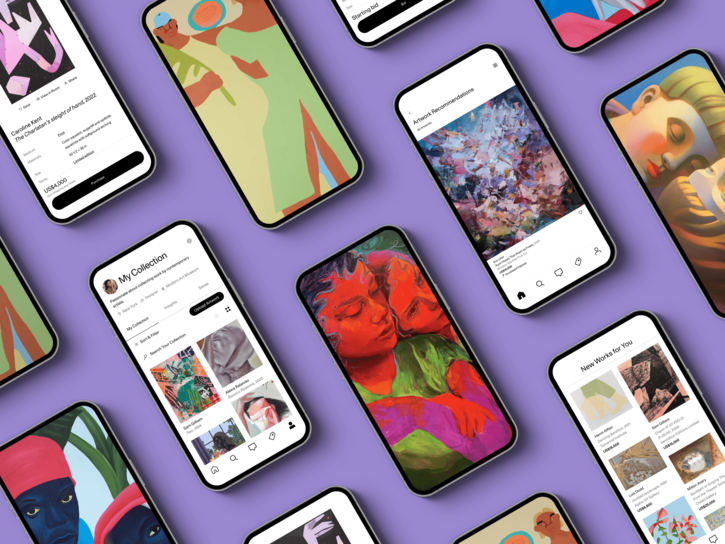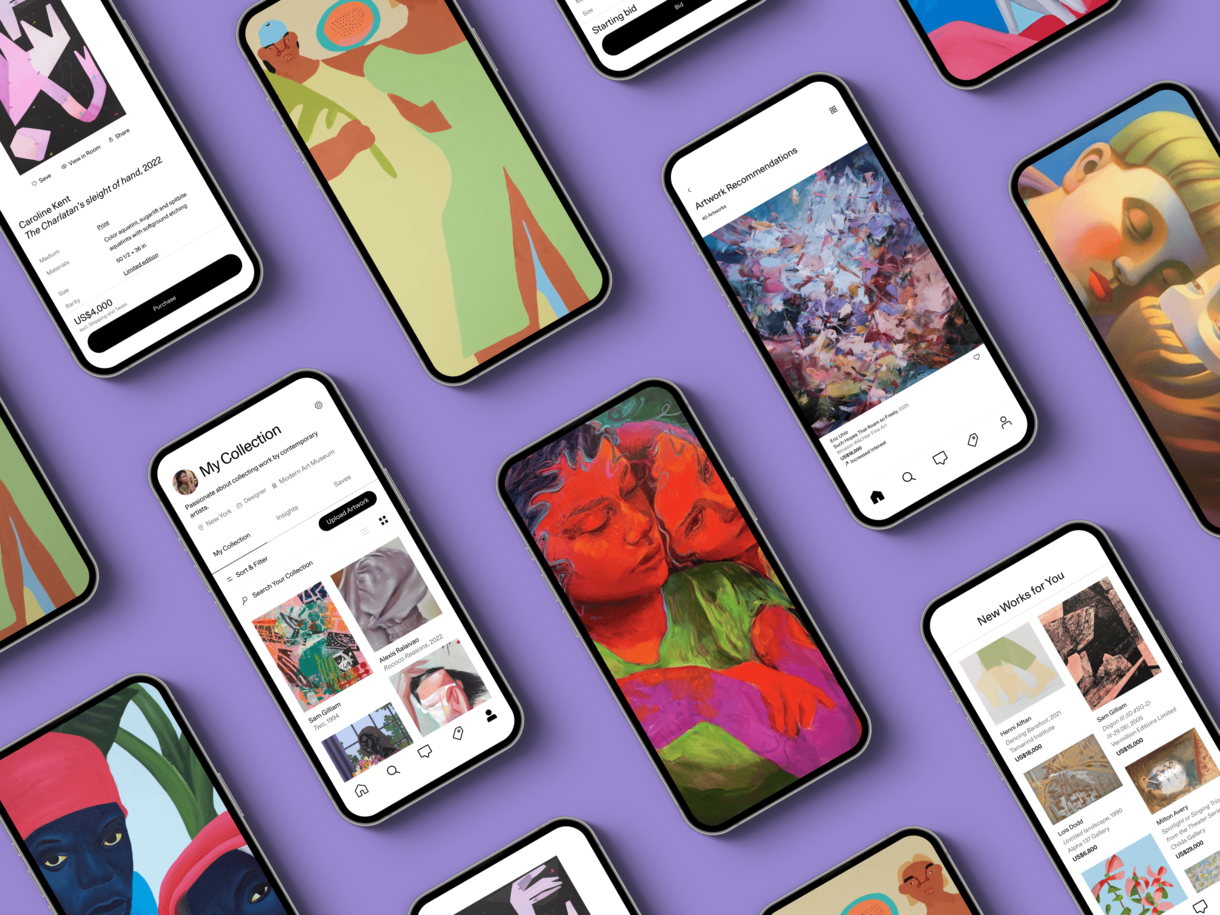Faith Ringgold’s New Museum Retrospective Plays It Safe in Ways the Artist Has Not
Faith Ringgold, installation view of “Faith Ringgold: American People” at the New Museum, 2022. Photo by Dario Lasagni. Courtesy of the New Museum, New York.
Faith Ringgold’s adverse style and ever-fluid process-oriented practice has taken her through printmaking, painting, quilting, sculpture, and various genres within those mediums over a 70-year period. The 91-year-old artist’s practice is just as varied, delving into storytelling through sequential art, posters, photography, and so forth, and spans the same temporal length as her contemporary Jasper Johns. Compared to Johns’s recent second retrospective at the Whitney Museum of American Art—which featured an abundance of what is left to say about the artist’s oeuvre, experiments and all—Ringgold’s first retrospective at the New Museum, entitled “Faith Ringgold: American People,” is riddled with missing parts.
This is not to say that the staging of “Faith Ringgold: American People” is not worthwhile. With an artist with that much art history beneath her, there are bound to be precious gems on display. But the gems appear accident to the staging of the exhibition itself. Take, for instance, the most provocative work in the show: the soft sculpture Atlanta Children (1981), made in response to the Atlanta child murders of 1979–81. The work is exhibited alongside Atlanta Children is The Screaming Woman (1981), an evocative soft sculpture of a silently wailing Black mother—a figure often erased from narratives about the Black victims of systematic brutality in the United States. Lying on the floor by her feet is an open pocketbook with money, cigarettes, a TV guide, a Citibank Visa card, and other ephemera strewn about.
Faith Ringgold, installation view, from left to right, of The Screaming Woman and Atlanta Children, both 1981, in “Faith Ringgold: American People” at the New Museum, 2022. © Faith Ringgold. Photo by Dario Lasagni. Courtesy of the artist and New Museum.
In her hands, she holds a newspaper with the headline “Save Our Children in Atlanta” in bold and images of Atlanta Children, which depicts the heads of the murdered Black children as chess pieces with tags showing their original photograph and age. Atlanta Children is a damning sculpture that plays into the racial hierarchical structure of mourning produced by white supremacy that renders Black lives as precarious, and less worthy of the right to a life. It’s a shame, then, that the work is stationed in the New Museum’s infamously inaccessible corridor that rests between the third and fourth floors with stairs flaking each side.
The tucking away of Alanta Children becomes a metaphor for the exhibition overall. The retrospective is more interested in the heroic works of Ringgold’s career than excavating the artist’s decades-long practice where she takes up, discards, and grapples with various processes to find outlets that can account not only for the gravitas of her ideas, but for the intersectionality of her existence. There are gestures to that here and there, as evidenced in the staging of Ringgold’s impressive, early, unstretched canvases with sewn fabric borders, which were inspired by her 1972 encounter with Tibetian thangkas while visiting the Rijksmuseum in Amsterdam.
Faith Ringgold, Slave Rape #2: Run You Might Get Away, 1972. © Faith Ringgold. Photo by Dario Lasagni. Courtesy of the artist and the New Museum, New York.
Faith Ringgold, Slave Rape #3: Fight to Save Your Life, 1972. © Faith Ringgold. Photo by Dario Lasagni. Courtesy of the artist and the New Museum, New York.
The works that directly reference thangkas are included in “The Feminist Series” (1972–73) and “Slave Rape” (1972). In “The Feminist Series,” Ringgold scrambles East Asian iconography across typeface and style on the thangkas to trouble histories of belonging outside of the Euro-American canon of artmaking. The “Slave Rape” thangkas are disturbing for their representational focus on sexual exploitation and violence committed against Black women during the slave trade. Ringgold confronts our gaze directly by featuring her facial likeness onto these women as a way to connect and repair the temporal gap between the then and the now. Ringgold’s investment in linking the narrative of slavery as part of the symbology of America should not be overlooked. And yet, one walks away from the exhibition feeling that more could have been done to situate Ringgold’s interests in the representation of Black American culture through her work’s varied narratives and incorporation of other non-Euro-American cultural practices.
The exhibition’s absence of her early experiments paints Ringgold as a fully fledged artist with a set boundary in artmaking. For a survey exhibition, this might suffice, but for a retrospective, it leaves much to be desired. Missing from the exhibition are Ringgold’s early oil paintings from the 1950s, her later experiments in painting from the 2000s, and her more autobiographical pieces. One critical work of autobiography, Change: Faith Ringgold’s Over 100 Pound Weight Loss Performance Story Quilt (1986), is on view in “Faith Ringgold: American People” and reveals a complicated side to Ringgold’s feminist practices. It narrates Ringgold’s experiences and musings with weight loss, using fat as both a physical component of the body and as a metaphor for an excess of critical thinking. The three-part quilt, which includes Change 2 (1988) and Change 3 (1991), is riddled with internalized patriarchal commentary on women’s bodies. We see the extent and burden of Ringgold’s upbringing bear itself against her body as a Black woman in the mid–20th century, where her expectations were to be a respectable, dutiful wife and mother.
Faith Ringgold, installation view of “Faith Ringgold: American People” at the New Museum, 2022. Photo by Dario Lasagni. Courtesy of the New Museum, New York.
The compelling visuals of Ringgold as a child, a bride, a debutante, a mother, and a wife ironed onto the quilt in Change engross the viewer into the palpable correlation between Ringgold’s quilts and her role as a master storyteller. The visuals enrich the textual narrative and demonstrate the fact that text and image is a curated relationship as opposed to a natural fit. And therein lies the missing parts of an exhibition entitled “American People.” To work through the symbols and ideologies of a nation is to work through the ways that narrative correlates and sustains those symbols. While the exhibition is rife with Ringgold’s iconography of America across her “Black Light Series” (1967–69) and “American People Series” (1963–67), the exhibition favors symbols over Ringgold’s individual, personal narratives that would shift her audience’s perspective of America from an event-like epoch to an interpersonal exchange. It’s in Ringgold’s narrative of her life and the lives of others where we find the representation of American people.




